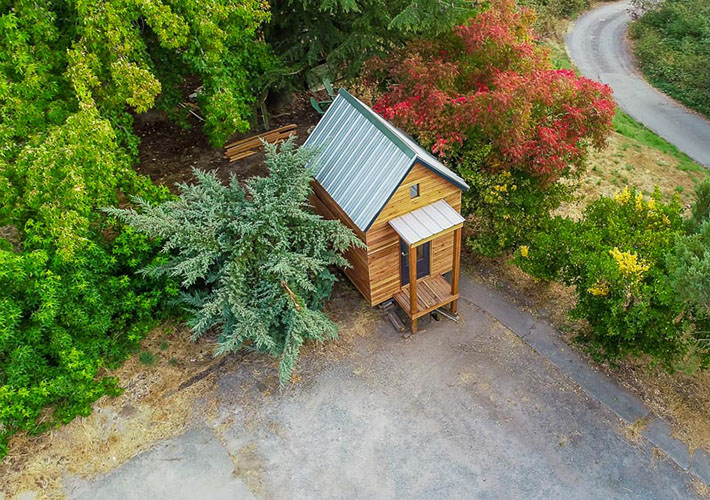
By Tim Sprinkle
Dec 16, 2022
As of 2022, the average single-family home in the U.S. currently costs more than $357,000 according to Zillow, up 13% in the last year. A decade ago, that figure was under $200,000. And similar increases are happening all over the world.
The rising cost of housing is forcing many people to get creative when considering a place to live. Multi-family developments, manufactured home communities, and other options are increasingly popular in markets where prices are rising faster than incomes. We can add tiny houses to that list. Over the last couple of decades, the trend toward small, moveable structures has taken hold, inspiring multiple TV series, new tiny-house communities, and dedicated builders focused on crafting these unique homes. Now they are emerging as a potential solution to the worldwide housing crunch.
READ MORE: New Concrete, New Standards
However, tiny house builders and proponents have long faced challenges and questions when designing and marketing their products: Is it a true home? An RV? Or something else? And can someone live in it full-time if it isn’t actually a house?
‘’Tiny houses fall into a gray area between manufactured/modular homes and RVs, creating an uncertain regulatory landscape where it is almost impossible to legally reside in a tiny house year-round,” says Eric Fried, Chief Building Official of Larimer County, Colorado.
So far, this has held back the potential of tiny homes to address the larger demand for housing. With the right regulations in place, these structures could be used to help senior citizens age in place, transition the less fortunate to more permanent housing, and more.

That’s where ASTM International’s newly formed subcommittee on tiny houses (E06.26) is focusing its work. As part the committee on performance of buildings (E06), E06.26 will soon be developing standards related to tiny houses. These will include best building practices, test methods, certification, quality assurance, micro-grid utilities, and more.
“The common link globally for tiny houses is that we don't have standards that are unique to our own industry,” says Janet Thome, ASTM member and founder and president of Tiny House Alliance USA. She was involved in the effort to establish the new subcommittee. “Is a tiny home on wheels a building or a vehicle? Well, it's actually both. We’re excited to be able to help make those determinations as part of ASTM now.”
The subcommittee is in the process of assembling its membership, but once the group is established, it plans to begin developing its own standards, starting with tiny-house terminology and creating a uniform construction standard for tiny houses on wheels that will result in a new classification of housing. As Thome explains, that standard is particularly needed by the industry because these structures today fall through the cracks of existing regulations. “We're not an RV, we're not a modular home, we're not a manufactured home. We're trying to introduce something brand new; something that doesn't exist.”
FOR YOU: 6 Standards Making a Difference for the Environment
Later standards from E06.26 will address how tiny houses are connected to electrical micro-grids, how they must deal with wastewater and greywater, what a tiny house foundation needs to include, certifications, and more. The lack of such standards for tiny houses so far has led to vastly divergent designs and implementations around the world, as well as to the proliferation of sometimes unsafe building practices, titling issues, and inconsistent access to financing and zoning. The new subcommittee will be working to establish the industry and the products it creates as safe, livable, full-time housing options in their own right.
''This is a very important effort for the availability of affordable housing across the United States and abroad,” says Philip Bona, architect and founder of Housing the Next 1 Million. “Tiny houses – on wheels or not – are a valuable, flexible cultural phenomenon that offers millions of disenfranchised people and the homeless an opportunity to have housing on their terms. ASTM will develop a set of equitable standards mandated for jurisdictions around the country to follow. RV parks will evolve to become tiny-home villages and create a new culture of happy and safe homes. The modular and custom tiny-house industry is growing rapidly. The diversity and variety of tiny houses to be built will be an exciting product market to watch.”
Tim Sprinkle is a freelance writer based in Colorado Springs, Colorado. He has written for Yahoo, The Street, and other websites.
January / February 2008
028